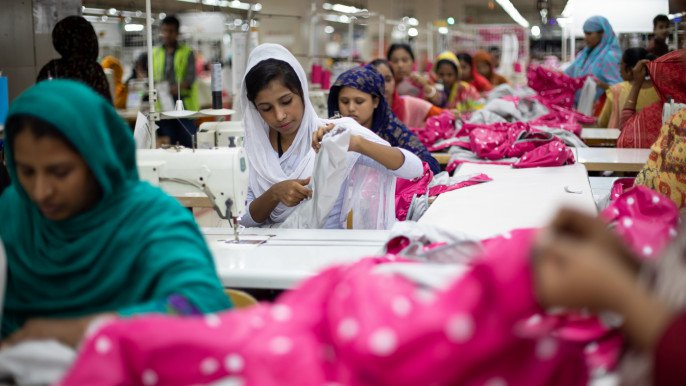Published in Sourcing Journal Online on March 07, 2018

Though President Trump has threatened to impose tariffs on steel and aluminum and trading partners have alluded to retaliation on items like Levi’s jeans, textile and apparel imports to the U.S. are on the upswing for, increasing 2.6% to 5.61 billion square meter equivalents (SME) in January over a year earlier.
Textile imports rose 4.5% to 3.19 billion SME, while apparel shipments increased 0.2% to 2.42 billion SME, according to a monthly report released Wednesday by the Commerce Department’s Office of Textiles and Apparel.
Among the top 10 U.S. suppliers, China—still No. 1 by a very long shot—saw its imports increase 0.9% in January to 2.76 billion SME year-over-year. Meanwhile India, the No. 2 supplier of textiles and apparel to the U.S., notched an 11.4% gain to 455 million SME, and Vietnam, the third largest supplier, posted a 0.6% rise to 425.6 million SME.
Among the top suppliers with declines in shipments, South Korea saw the biggest drop, with its goods to the U.S. falling 9.4% to 115.8 million SME. Imports from Pakistan to the U.S. dipped 0.3% to 222.6 million SME, and Indonesia’s fell 5.4% to 148.1 million SME.
The remaining countries making gains, Cambodia saw the steepest increase, with its U.S.-bound textiles and apparel jumping 27 percent to 112.2 million SME. Canada followed closely in terms of growth, with the U.S. taking in 25 percent more of its goods to reach 100.2 million SME, and Mexico saw its shipments rise 2.4% to 191 million SME. As tensions grow increasingly strained in the North American Free Trade Agreements, however, that growth could be threatened.
In value terms, textile and apparel imports to the U.S. rose 4.24% in January to $9.29 billion compared to $8.91 billion a year earlier. Imports from China increased 0.68% to $3.41 billion, garnering a 36.44% market share, while Vietnam saw a 4.16% gain to $1.16 billion and a 11.5% share.
Amid the NAFTA talks, Mexico posted a 14.16% increase in shipments valued at $374.53 million and a 4.53% share, and Canada notched a 14.48% rise to $107.37 million and a 1.23% share.
Among the major Asian suppliers, the value of imports from India increased 2.69% to $649.76 million, taking it to a 6.96% share. Bangladesh’s shipments rose 1.95% to $509.69 million and a 4.97% share, Pakistan’s moved up 5.52% to $251.13 million and a 2.61% share, and Cambodia’s jumped 22.87% to $226.88 million and a 2.14% share. Imports from Indonesia, on the other hand, fell 1.73% to $428.49 million and a 4.47% share.
Among Central American countries, Honduras saw the value of its imports to the U.S. increase 13.92% to $157.1 million and a 2.36% share, El Savador’s shipments rose 0.93% to $123.15 million and a 1.84% share and Nicaragua’s shipments increased 10.96% to $117.35 million and a 1.41% share.
Footwear imports were up 6.6% to $1.78 billion in January compared to December.
Meanwhile, the overall U.S. trade deficit in goods and services increased 5 percent to $56.6 billion in January from $53.9 billion in December, according to the Bureau of Economic Analysis (BEA). BEA reported that January exports decreased 1.3% to $200.9 billion compared to December and were essentially flat at $257.5 billion from a year earlier.
Exports of apparel and clothing accessories increased 11.2% to $277 million in January from December and grew 21.5% compared to a year earlier.
Exports of fabric and yarn increased 6.7% month-to-month and 4.8% year-to-year to reach $960 million in the month. Footwear exports fell 8.7% to $69 million month-to-month, but rose 19 percent year-over-year.
 CPD RMG Study Stitching a better future for Bangladesh
CPD RMG Study Stitching a better future for Bangladesh



